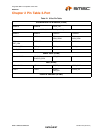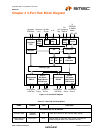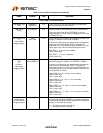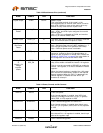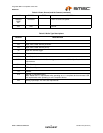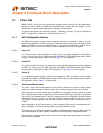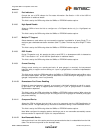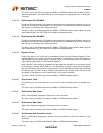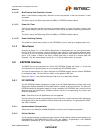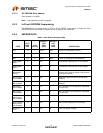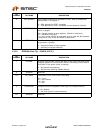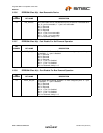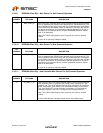
Integrated USB 2.0 Compatible 3-Port Hub
Datasheet
SMSC USB2503/USB2503A 15 Revision 2.3 (08-27-07)
DATASHEET
5.1.1.5 Port Indicators
Controls the use of LED indicator for Port status information. See Section 11.5.3 of the USB 2.0
Specification for additional details.
This field is set by the OEM using either the SMBus or EEPROM interface options.
5.1.1.6 High-Speed Disable
Allows an OEM to force the Hub to configure as a Full-Speed device only (i.e. High-Speed not
available).
This field is set by the OEM using either the SMBus or EEPROM interface options.
5.1.1.7 Multiple-TT Support
Selects between a mode where only one transaction translator is available for all ports (Single-TT), or
each port gets a dedicated transaction translator (Multi-TT) {Note: The host may force Single-TT mode
only}.
This field is set by the OEM using either the SMBus or EEPROM interface options.
5.1.1.8 EOP Disable
During FS operation only, this permits the Hub to send EOP if no downstream traffic is detected at
EOF1. See Section 11.3.1 of the USB 2.0 Specification for additional details.
This field is set by the OEM using either the SMBus or EEPROM interface options.
5.1.1.9 Current Sensing
Selects current sensing on a port-by-port basis, all ports ganged, or none(only for bus-powered
hubs)The ability to support current sensing on a port or ganged basis is hardware implementation
dependent.
This field can be set by the OEM using either the SMBus or EEPROM interface options.When using
the internal default option, the SELF_PWR pin determines if current sensing will be ganged, or none
(ganged if self-powered, none if bus-powered)
5.1.1.10 Downstream Port Power Enabling
Enables all ports simultaneously (ganged), or port power is individually switched on and off on a port-
by-port basis. The ability to support power enabling on a port or ganged basis is hardware
implementation dependent.
This field is set by the OEM using either the SMBus or EEPROM interface options. When using the
internal default option, the GANG_EN pin will configure the hub for ganged or individual port-by-port
port power switching.
5.1.1.11 Compound Device
Allows the OEM to indicate that the Hub is part of a compound (see the USB Specification for
definition) device. The applicable port(s) must also be defined as having a “Non-Removable Device”.
This field is set by the OEM using either the SMBus or EEPROM interface options.
Note: When configured via strapping options, declaring a port as non-removable automatically causes
the hub controller to report that it is part of a compound device.
5.1.1.12 Non-Removable Device
Informs the Host if one of the active ports has a permanent device that is undetachable from the Hub.
(Note: The device must provide its own descriptor data.)



